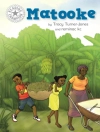‘Berman provides helpful, guided, step-by-step procedures for new and seasoned teachers to review and reassess their methods for teaching students how to collect, organize, and analyze new ideas.’
—Jean Eames, Chemistry and Biology Teacher
Benson Polytechnic High School, Portland, OR
‘This book presents strategies to engage students in making meaning out of prior knowledge, texts, and specific content.’
—Nancy T. Davis, Associate Professor of Middle and Secondary Education
Florida State University
A blueprint for science lessons that develop students′ higher-level thinking skills!
This inspiring look at teaching science presents a specific and creative approach designed to cultivate and strengthen students′ critical thinking skills. The author provides interactive techniques and a variety of activities that involve student reflection, brainstorming, and verbal, visual, and analytical skills.
This second edition of Catch Them Thinking in Science offers easy-to-use strategies for cooperative learning and provides sample units of study that align with national science standards. The revised edition includes updated research, a new section on designing your own science activities, an expanded discussion of assessment methods, and an assortment of handy reproducibles to use with lesson plans. With the research-based rationale behind each activity and strategy, teachers will be able to help students:
- Make their thinking visible through graphic organizers such as webs, Venn diagrams, and matrices
- Gather, process, analyze, and apply information throughout the science curriculum
- Increase their comprehension by working in cooperative learning groups
Designed to promote the development of lifelong thinking and learning skills, this practical resource offers teachers powerful techniques for engaging students and advancing their achievements in science.
Зміст
Preface
Acknowledgments
About the Author
Introduction
Part I. Gathering Information
1. The People Search: Getting to Know You
2. KNL: What Do We Know? What Do We Need to Know? What Have We Learned?
3. Asking Questions: What I Really Do Not Understand Is…
4. The Prediction Guide: Becoming More Focused Readers
5. The Importance of Using Precise Labels: Latch Onto a Label
6. Think-Pair-Share: And the Answer Is. . .
7. Making Observations: It Makes Cents to Me
8. Accurate Observations: Hide in Plain Sight
Part II. Processing Information
9. Mental Modeling: What Is Behind Door Number Two?
10. Becoming Better Listeners: What a Bright Idea
11. The Venn Diagram: Frogs and Salamanders
12. Using a Fishbone: The Planets Organized
13. One Way to Use a Matrix: That Is My Pet Matrix
14. Looking for Attributes: Scavenger Hunt
Part III. Analyzing and Applying Information
15. Lateral Thinking: Cook′s Choice
16. An Individual Writing Activity: Dear Uncle Chester
17. A Jigsaw: Elements, Compounds, and Mixtures
18. Follow-Up for Guided Practice: Elements, Compounds, and Mixtures
19. Using a Storyboard: Home on the Range Just Is Not the Same
20. Mapping: Making Sense of What We Know
21. Right-Angle Thinking: Molecules in Motion
Part IV. Designing Your Own Activities
22. Designing Your Own Activities: Your Turn!
Reproducibles
References and Recommended Readings
Index
Про автора
Sally Berman specializes in teaching educators how to use practical strategies that expand student teamwork, cognition, metacognition, and self-evaluation skills. She developed and tested many of her ideas during her 30 years of teaching science in a large Chicago-area high school. Berman regularly presents at workshops and conferences and has taught graduate courses for Sky Light Professional Development in conjunction with St. Xavier University and Cumberland University.












